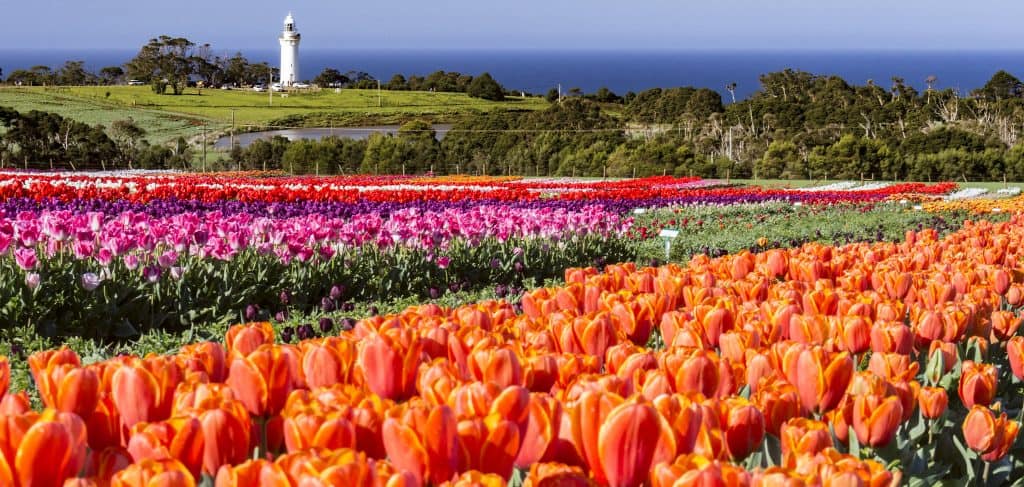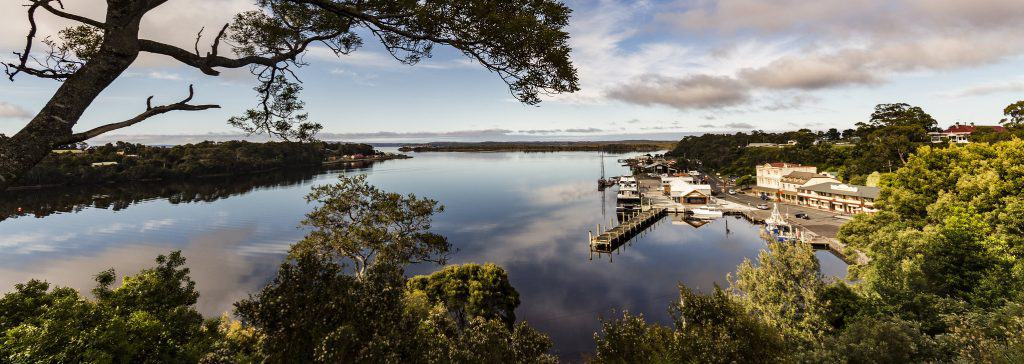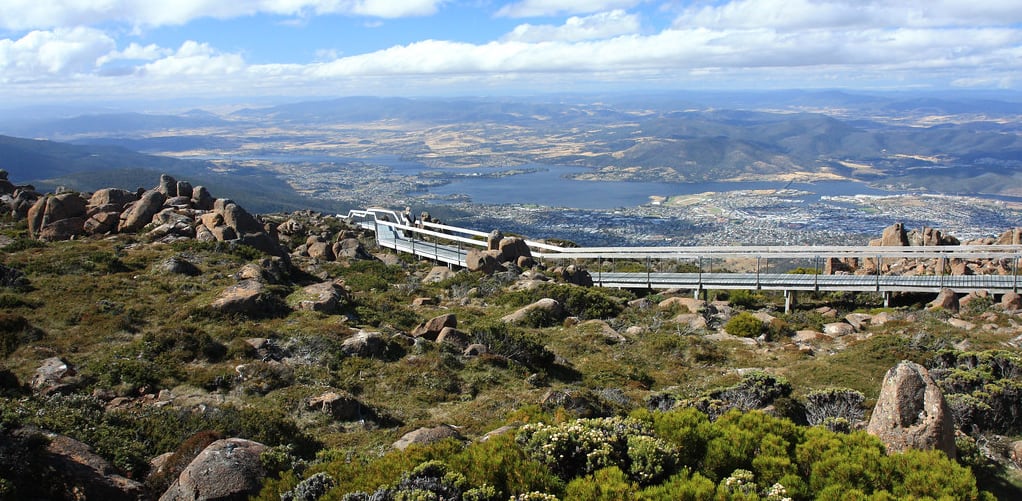
A tulip farm during the Wynyard Tulip Festival. Picture: Steven Penton
Tasmania isn’t just apples, cherries and trout. It’s got MONA art gallery, Hobart’s Salamanca markets, a vast World Heritage Area, magnificent bushwalks, an abundance of seasonal regional festivals, secluded beaches, serene lakes, bush camping …
You’ll find specific attractions on our other pages.
But here, a bit about Tasmania.
“Tassie” is 240km south of the Australian mainland, separated by the Bass Strait. It is the 26th largest island in the world, and surrounded by 334 islands.
Once the butt of mainlander jokes, the island is now a thriving state with a mix of industries, including tourism, forestry, agriculture and aquaculture.
Tassie had a population of about 519,000 in 2016, with 40 per cent living in the metropolitan area of the capital, Hobart.
The island is 280km north-to-south and 260km east-to-west when measured through its mid point. Its area is 68,400km2. Protected land areas cover about 42 per cent, and these include National Parks and World Heritage Sites.

Bruny Island, just out of Hobart. Picture: Steven Penton
Being an island, the climate is sea-moderated. There are four distinct seasons.
While mainlanders swelter in intensifying heat, Tasmanians relax in a more moderate climate, although it certainly gets hot in summer.
Most parts of Tasmania rarely fall below 0C. Snow only rarely falls on Hobart, although it falls most years on nearby Mount Wellington and other high points.
Tassie is, of course, getting warmer. Records have been tumbling in recent years, the spring of 2017 was great example.
The highest recorded temperature was 42.2C at the East Coast’s beachside Scamander on January 30, 2009. The lowest recorded minimum was −13C June 30, 1983, at Butlers Gorge, Shannon, and Tarraleah in the high country.
Summer, from December to February, sees an average maximum sea temperature of 21C. Tasmanian weather is changeable, with descriptions of “four seasons in a day” being appropriate at times. Jacket on, jacket off, as they say. The Golden Rule is to keep a jacket in your car.

Hobart’s famous Salamanca Markets. Picture: Rhettro Photography
It is important to understand that because of Tasmania’s lumpy nature, with a high plateau in the middle, the climate varies considerably on different parts of the island.
Also, being in the high latitudes, the days are short in winter (dark at 5pm) and long in summer (dark at 9pm).
There are also micro climates. The aspect of a property, for example, whether it is on the north or south side of a valley or large hill, can have a significant impact on conditions experienced by residents. North facing hills get all the sun, but they also dry more quickly. South facing hills are cooler, but tend to retain moisture longer.
Liawenee on the Central Plateau, is one of the coldest places in Australia, ranging between 4C and 17C in February. Tasmania’s East Coast is the warmest region.
Autumn is from March to May, and usually provides the most settled weather.
Winter is from June to August, historically the wettest and coolest months, with high-lying areas receiving snowfall. Some low lying areas get frosts.
In recent times the month for the most rainfall seems to be September.
Winter maximums are 12C on average along coastal areas and 3C on the Central Plateau.

The west coast township of Strahan. Picture: Steven Penton
Despite the cool temperatures and perceptions of eternal rain, Tasmania is actually the second driest Australian state, after South Australia.
Spring is from September to November, a season of transition and unsettled weather, with high altitude snowfall prevalent until October.
Things that like cold water are trout and Atlantic salmon. Tasmania has superb trout fishing opportunities, especially in the lakes. There’s also good river fishing, but this varies with the seasons.
Atlantic salmon farming has become a huge industry. It is mostly located in the south of the state around the Huon, and on the West Coast at Macquarie Harbour. Farming is also being developed on the East Coast.
Tasmanian politics tends to be polarised between the Greens and mainstream parties. The Tasmanian Greens were the world’s first environmental party, forming as a result of the battle over the proposed Franklin Dam, following the controversial damming of Lake Pedder.
The “forestry wars” and more recently “fish farm wars” continue to this day, albeit mostly without the human chains and other protest methods of yesteryear.
With the combined effects of climate change and industry now pushing the environmental envelope, and with many Tasmanians and visitors wanting Tasmania’s natural heritage preserved, the wars are likely far from over.
